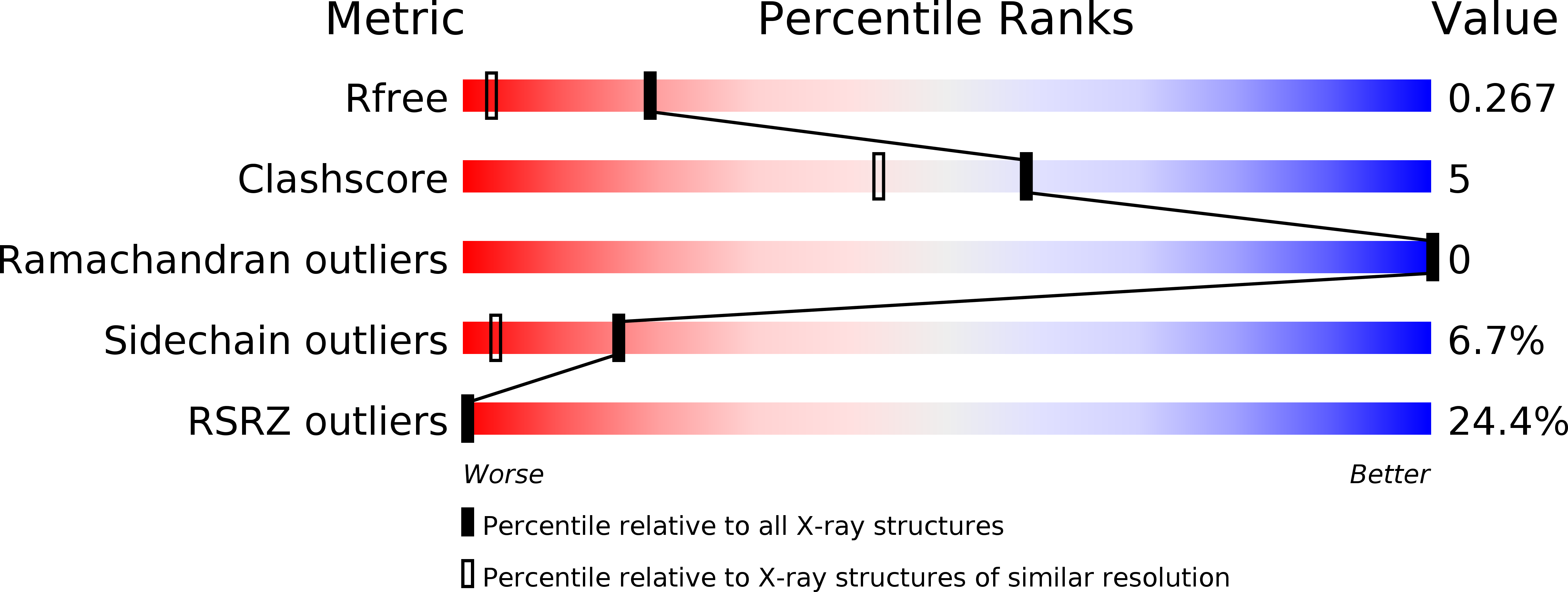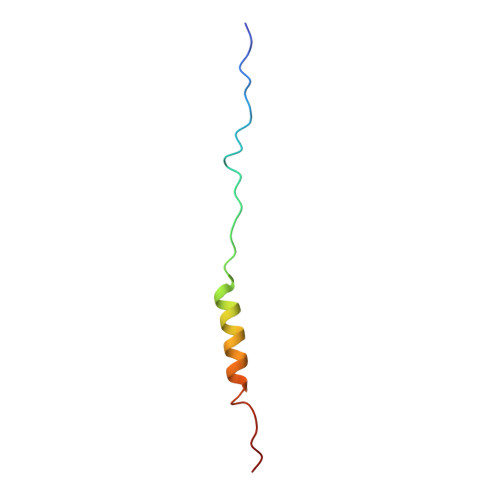Structure of a Proteolytically Resistant Core from the Severe Acute Respiratory Syndrome Coronavirus S2 Fusion Protein
Supekar, V.M., Bruckmann, C., Ingallinella, P., Bianchi, E., Pessi, A., Carfi, A.(2004) Proc Natl Acad Sci U S A 101: 17958
- PubMed: 15604146
- DOI: https://doi.org/10.1073/pnas.0406128102
- Primary Citation of Related Structures:
2BEQ, 2BEZ - PubMed Abstract:
A coronavirus (CoV) has recently been identified as the causative agent of the severe acute respiratory syndrome (SARS) in humans. CoVs enter target cells through fusion of viral and cellular membranes mediated by the viral envelope glycoprotein S. We have determined by x-ray crystallography the structure of a proteolytically stable core fragment from the heptad repeat (HR) regions HR1 and HR2 of the SARS-CoV S protein. We have also determined the structure of an HR1-HR2 S core fragment, containing a shorter HR1 peptide and a C-terminally longer HR2 peptide that extends up to the transmembrane region. In these structures, three HR1 helices form a parallel coiled-coil trimer, whereas three HR2 peptides pack in an oblique and antiparallel fashion into the coiled-coil hydrophobic grooves, adopting mixed extended and alpha-helical conformations as in postfusion paramyxoviruses F proteins structures. Our structure positions a previously proposed internal fusion peptide adjacent to the N-terminus of HR1. Peptides from the HR2 region of SARS-CoV S have been shown to inhibit viral entry and infection in vitro. The structures presented here can thus open the path to the design of small-molecule inhibitors of viral entry and candidate vaccine antigens against this virus.
Organizational Affiliation:
Istituto di Ricerche di Biologia Molecolare P. Angeletti, Via Pontina Km 30,600, 00040 Pomezia (Rome), Italy.
















